Free Hands-On Classroom Presentations
for Grades 1-3 & 5-12
Our educators bring everything they need to engage students in a science activity with a focus on water, make a mess, teach something, clean up, and leave only smiles. Activities last about 1 hour. All activities cover Next Gen Science standards. It is our policy when we visit a school to present to all of the classes at a grade level.
To schedule presentations, please fill out this form!
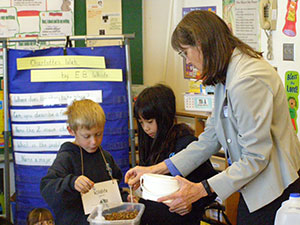
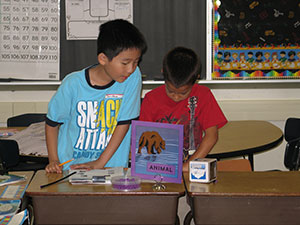
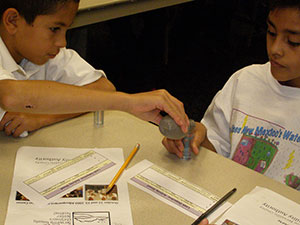
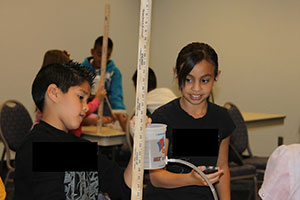
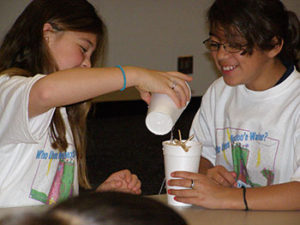

ELEMENTARY SCHOOL PRESENTATIONS
Grade 1 – H.2.Grow Students play a game in which they move drops of water from underground, up the roots of plants, through the stem, out of the leaves and into the clouds. When enough water has collected in the clouds, it rains. Find the activity guide with standards covered here.
Grade 2 – Water Year ‘Round: Students solve the riddle, “Which season am I?” Each clue shows a phase of water that students link to sounds of percussion instruments. Find the activity guide with standards covered here.
Grade 3 – Incredible Journey: Students roll the die and move through the water cycle, collecting colorful beads to make their own bracelets along the way. Find the activity guide with standards covered here. We have created Informational Text about plant adaptations to supplement this lesson, which comes with vocabulary words and questions. It is also available in Spanish.
Grade 4 – Click here to learn about the RIO Field Trip for all Albuquerque area fourth grades.
Grade 5 – Leaky Faucet: Students learn how little fresh drinking water we have on earth. They measure and calculate how much water is wasted in a leaky faucet. Find the activity guide with standards covered here. We have created Informational Text about the water available on earth to supplement this lesson, which comes with vocabulary words and questions. It is also available in Spanish.
MIDDLE SCHOOL PRESENTATIONS
Grade 6 – The Water-Energy Connection: Students must supply water and electricity to their town. They’ll quickly discover that they can’t get electricity without water, and they can’t get water without electricity. Our movie, The Power Couple is a good introduction or summing-it-up resource. Find the activity guide with standards covered here. We have created Informational Text about power generation for Albuquerque to supplement this lesson, which comes with vocabulary words and questions. It is also available in Spanish.
Grade 7 — Mighty Macroinvertebrates: Students will use math and sampling techniques to simulate a bioassessment. Using a net to scoop up colored beads that represent macroinvertabrates, they determine the relative health of their water sample. Find the activity guide with standards covered here. We have created Informational Text about pollution in the river and dogs to supplement this lesson, which comes with vocabulary words and questions. It is also available in Spanish.
Grade 8 — Go with the Flow: Using trial and error, students determine the height they must build their reservoir so that water will flow to homes upon demand Find the activity guide with standards covered here. We have created Informational Text about how evaporation affects water storage to supplement this lesson, which comes with vocabulary words and questions. It is also available in Spanish.
HIGH SCHOOL PRESENTATIONS
Biodiversity is Grand: What are invasives? Why are are our cottonwoods in peril? Cover your bosque board to learn how our decisions impact the future biodiversity of NM. Find the activity guide with standards covered here.
Pollution Detective: Students use pH paper to search through their plot of dirt to find the source of groundwater pollution. If it’s out of sight, should we keep it in mind? Find the activity guide with standards covered here.
What Scientists Do with Number One and Number Two — Students fill their plastic cup toilet with wastewater and figure out how to clean it. After they separate water, trash, and sludge, they learn what Albuquerque’s Wastewater Treatment Plant does with each. Micrographs and videos of our microscopic workers cleaning water are always a big hit! Find the activity guide with standards covered here. Take a digital tour of the wastewater plant as a way to introduce the lesson or review.
Please fill out this form to request a presentation! Questions? Call Jeff Tuttle at 505-804-6705 or email @ jtuttle@abcwua.org

